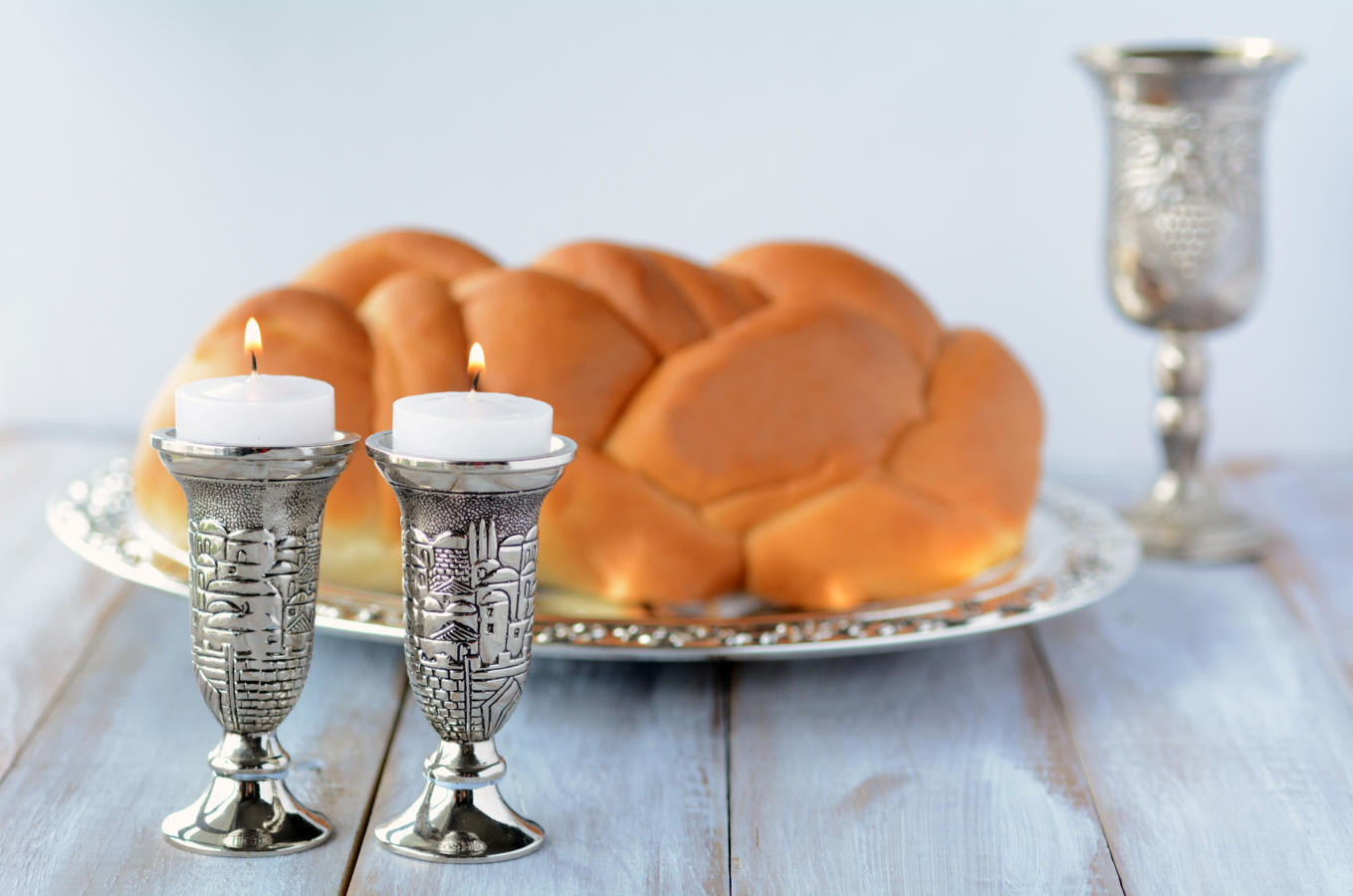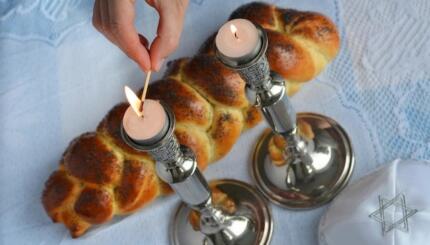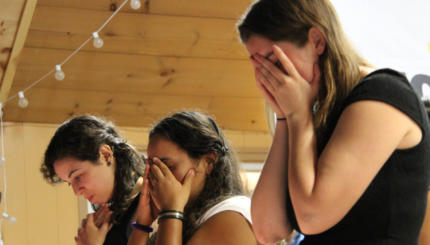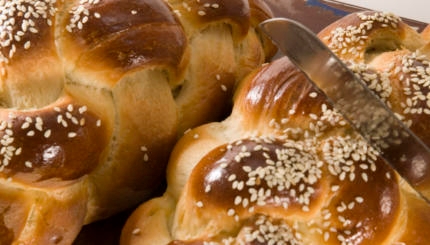Question: When it rains on a Friday and it seems to get dark earlier, does
start sooner? Or do you just go by when the Farmer’s Almanac says that the sun sets?
Answer: Shabbat officially begins at sunset, not when it gets dark, so no amount of clouds can bring in Shabbat earlier. That being said, Jewish communities actually do have the custom of lighting Shabbat candles 18 minutes before sunset (shkiah). These 18 minutes provide a grace period for watches and clocks set to slightly different times, ensuring that no one begins Shabbat any later than the actual sunset.
You can easily find out what time candle lighting is in your town by typing your ZIP code in the widget below.
Many communities also hand out flyers or refrigerator magnets with the times for the whole year listed. This makes it easy to keep track of when Shabbat and holidays start, even when sunset isn’t clearly visible.

Help us keep Jewish knowledge accessible to millions of people around the world.
Your donation to My Jewish Learning fuels endless journeys of Jewish discovery. With your help, My Jewish Learning can continue to provide nonstop opportunities for learning, connection and growth.
But your question suggests another much more complicated question: Before we had refrigerator magnets and Farmer’s Almanacs to consult, how did communities decide when Shabbat started? And before wrist and pocket watches became popular, how could communities ensure that everyone was lighting their Shabbat candles at basically the same time?
There are a few answers to this question. The first is fairly logical. For many years, and to a certain extent to this very day, Jews tended to live in close quarters. The whole community would make its home in no more than a few city blocks. This made it easy to notify the whole community about all kinds of information, including the beginning of Shabbat and holidays. Many communities had a designated town crier, known as a “ klapper,” whose job it was to walk up and down the Judenstrasse (Jewish street) loudly heralding the arrival of the Sabbath Queen. The shul klapper helped to ensure that the community brought Shabbat in on time every week.
How did the shul klapper know when to start his shouting journey? Especially on cloudy days, he wouldn’t have been able to see the sun set, and he may not have had access to a chart or calendar that would give him reliable times. Generally, he would just go by the time the sun set on Thursday, or the last time the sunset was visible. He then would be well within the 18 minutes allotted before Shabbat begins. When in doubt, a good shul klapper would bring Shabbat in early.
These days, we no longer have shul klappers, but there are some cities in Israel (notably Jerusalem and Ramat Beit Shemesh) that play Jewish music, or a blast a siren on the citywide Emergency Broadcast System, announcing both the beginning and the end of the 18 minutes.
Sign up for My Jewish Learning’s RECHARGE, a weekly email with a collection of Shabbat readings and more to enhance your day of rest experience.



